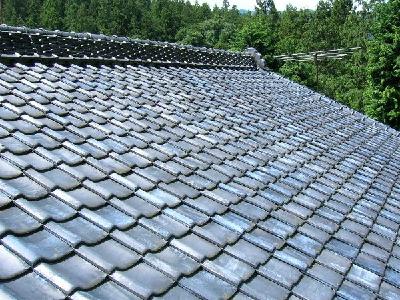|
Kawara, are roofing tiles made of fired clay.
History indicates that Kawara first appeared in China around 2,800 years ago. They were introduced to Japan in the middle of the 6th Century, at the same time Buddhism was introduced from Kudara, now Korea. Kawara were reportedly first used for the Asuka Temple in Japan.
At that time, temples were the only buildings allowed to use Kawara roofing tiles. In the Nara period, however. Kawara began to be used for various other types of buildings.
In the Edo period, new styles of Kawara were invented and the tiles came into popular use. Their widespread use was encouraged because they are fire proof.
Kawara are roughly classified into two categories in Japan: Nyouyaku Gawara or Glazed tiles and Ibushi Kawara or tiles which have oxidized and formed a silver- colored carbon film. As for shapes, there are now more than 1,000 varieties of Kawara.
Currently Sanshuu Kawara in Aichi, Awaji Kawara in Hyogo and Sekishu Kawara in Shimane are the three biggest production districts of high quality Kawara. They represent the finest in Japanese roofing tile making.
History indicates that Kawara first appeared in China around 2,800 years ago. They were introduced to Japan in the middle of the 6th Century, at the same time Buddhism was introduced from Kudara, now Korea. Kawara were reportedly first used for the Asuka Temple in Japan.
At that time, temples were the only buildings allowed to use Kawara roofing tiles. In the Nara period, however. Kawara began to be used for various other types of buildings.
In the Edo period, new styles of Kawara were invented and the tiles came into popular use. Their widespread use was encouraged because they are fire proof.
Kawara are roughly classified into two categories in Japan: Nyouyaku Gawara or Glazed tiles and Ibushi Kawara or tiles which have oxidized and formed a silver- colored carbon film. As for shapes, there are now more than 1,000 varieties of Kawara.
Currently Sanshuu Kawara in Aichi, Awaji Kawara in Hyogo and Sekishu Kawara in Shimane are the three biggest production districts of high quality Kawara. They represent the finest in Japanese roofing tile making.
| [+ADDRESS] | 
|














